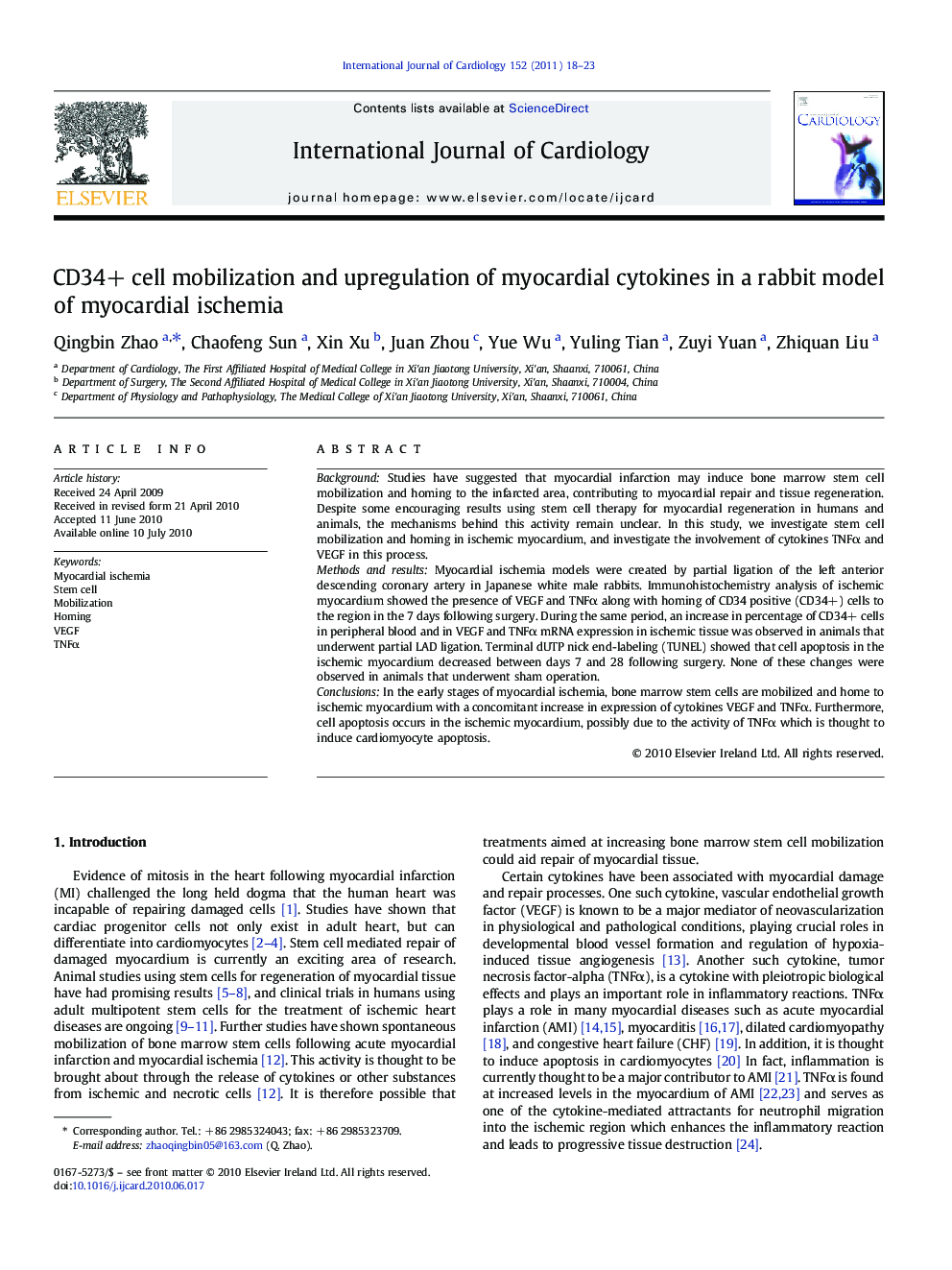| Article ID | Journal | Published Year | Pages | File Type |
|---|---|---|---|---|
| 5978562 | International Journal of Cardiology | 2011 | 6 Pages |
BackgroundStudies have suggested that myocardial infarction may induce bone marrow stem cell mobilization and homing to the infarcted area, contributing to myocardial repair and tissue regeneration. Despite some encouraging results using stem cell therapy for myocardial regeneration in humans and animals, the mechanisms behind this activity remain unclear. In this study, we investigate stem cell mobilization and homing in ischemic myocardium, and investigate the involvement of cytokines TNFα and VEGF in this process.Methods and resultsMyocardial ischemia models were created by partial ligation of the left anterior descending coronary artery in Japanese white male rabbits. Immunohistochemistry analysis of ischemic myocardium showed the presence of VEGF and TNFα along with homing of CD34 positive (CD34+) cells to the region in the 7 days following surgery. During the same period, an increase in percentage of CD34+ cells in peripheral blood and in VEGF and TNFα mRNA expression in ischemic tissue was observed in animals that underwent partial LAD ligation. Terminal dUTP nick end-labeling (TUNEL) showed that cell apoptosis in the ischemic myocardium decreased between days 7 and 28 following surgery. None of these changes were observed in animals that underwent sham operation.ConclusionsIn the early stages of myocardial ischemia, bone marrow stem cells are mobilized and home to ischemic myocardium with a concomitant increase in expression of cytokines VEGF and TNFα. Furthermore, cell apoptosis occurs in the ischemic myocardium, possibly due to the activity of TNFα which is thought to induce cardiomyocyte apoptosis.
